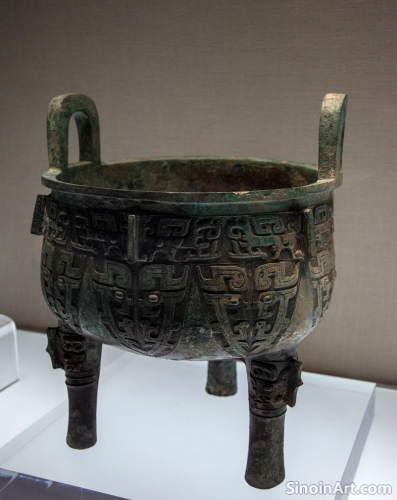The Role of Bronze in Ancient Chinese Agriculture: Tools, Irrigation, and Food Production
|
While often overlooked, bronze played a critical role in the development of ancient Chinese agriculture, providing more efficient tools, improved irrigation systems, and helping to revolutionize food production, and allowing for a more settled and reliable approach to agricultural production. The combination of agricultural and metalworking skills helped to shape the development of the ancient Chinese economy.  Bronze was used to create more durable and effective agricultural implements, such as plows, sickles, and hoes, which were essential for cultivation, and for harvesting larger crops, thereby enabling population growth and the accumulation of resources. The creation of new tools helped to transform ancient agriculture from a challenging undertaking to a more predictable and reliable enterprise.  Bronze was also used in the construction of irrigation systems, including pipes, valves, and other components that helped to control the flow of water, allowing for more efficient and reliable water management. The increased efficiency of irrigation was an essential element in supporting larger populations and more complex social systems.  Bronze was used to create tools for processing grains and other foods, and helped to increase efficiency and reduce food waste. The improvements in food processing also helped to enhance the overall quality of life. The interplay between technology and food production is a key element in human progress. The study of bronze in agriculture highlights the importance of technological innovations in shaping ancient Chinese society, demonstrating how advancements in metalworking contributed directly to the economy and to the overall prosperity of the era. The connection between technology, science, and the production of essential resources is a key element in our understanding of the ancient world. |
Tag : bronze agriculture, ancient tools, irrigation systems, food production, Chinese farming
Related information
- Bronze Mirrors as Tools of Divination and Magic in Ancient China
- The Preservation of Bronze Ware: Balancing Scientific Methods with Artistic Understanding
- Bronze Weights and Measures in Ancient China: Standardization and Trade
- The Use of Bronze in Ancient Chinese Water Control: Dams, Canals, and Irrigation Systems
- Bronze Ware and Ancient Chinese Understanding of Astronomy: Maps of the Sky and the Measurement of Time
This article explores the use of bronze mirrors as tools of divination and magic in ancient China, highlighting their perceived spiritual powers, their role in rituals and protective practices, and the insights they offer into ancient Chinese beliefs.
This article explores the preservation of Chinese bronze ware, highlighting the balancing act between scientific analysis and artistic understanding, the need for specialized techniques and ethical considerations, and also the need to provide access and ensure their long-term care.
This article explores the use of bronze for weights and measures in ancient China, highlighting the importance of standardization, fair trade practices, and the role these artifacts played in facilitating commerce across the empire.
This article explores the use of bronze in ancient Chinese water control systems, highlighting its role in creating durable components for dams, canals, and irrigation networks, and demonstrating its importance for agricultural development and water management.
This article explores the connection between bronze ware and ancient Chinese understandings of astronomy, highlighting the use of celestial motifs, the depiction of astronomical phenomena, and the creation of instruments that aided in understanding the universe.